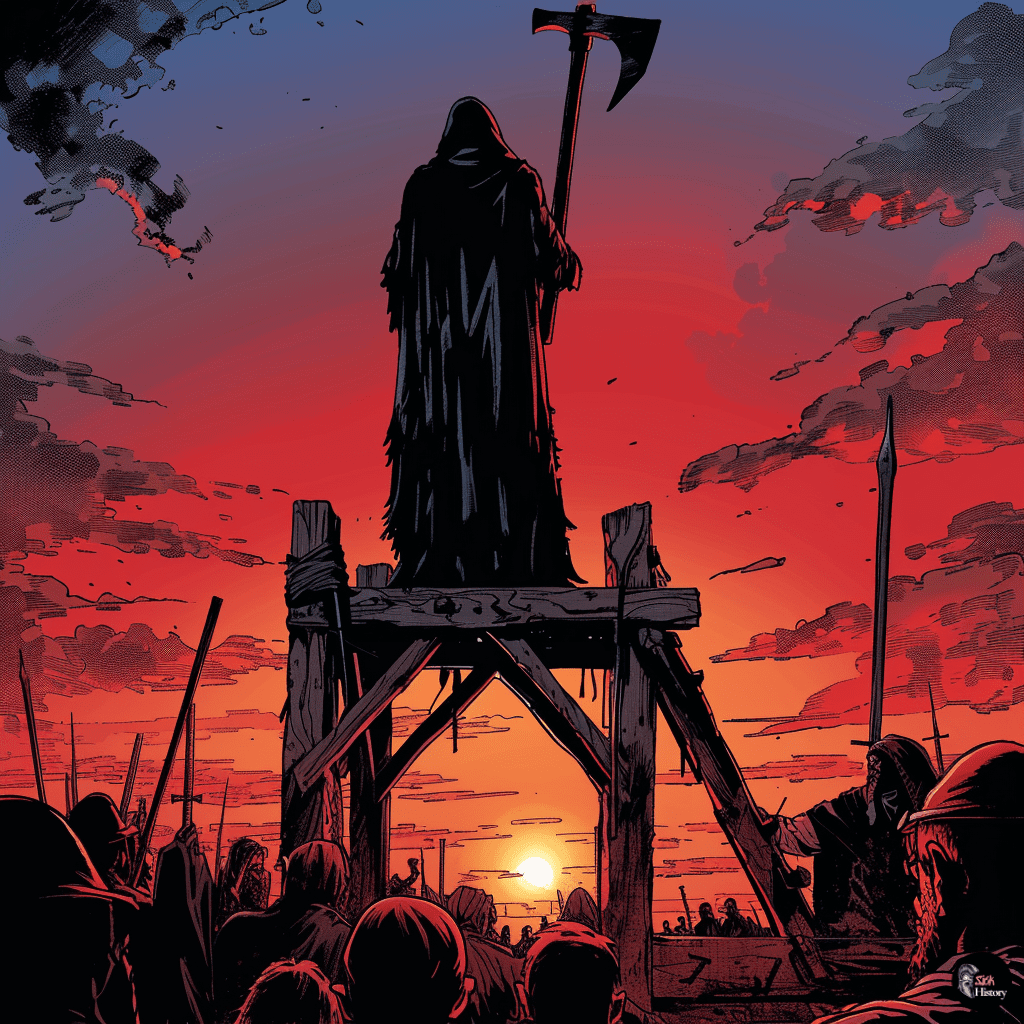Public executions were a common form of punishment in medieval Europe, serving as both a judicial sentence and a public spectacle. These events drew large crowds and were designed to deter crime through gruesome displays of state power.
Methods of execution varied but often included hanging, beheading, and quartering, with the chosen technique typically reflecting the severity of the crime.
The role of the executioner was central to these public displays. Tasked with carrying out the sentence, executioners developed specialized skills in inflicting pain and death.
Their position in society was complex, often feared and ostracized despite performing a necessary function.
Capital punishment during the Middle Ages was not limited to common criminals. Those convicted of treason faced particularly brutal ends, sometimes being hanged, drawn, and quartered in full view of the public.
While methods like crucifixion were less common in medieval Europe, they remained part of the collective memory of punishment.
Historical Context of Capital Punishment
Capital punishment has a long and complex history, evolving significantly from medieval times to the present day. The methods, rationale, and public nature of executions have changed dramatically over the centuries, reflecting shifts in societal values and legal systems.
Medieval Public Executions
Public executions were a common spectacle in medieval Europe. These events served multiple purposes: punishment, deterrence, and entertainment for the masses.
Executions often took place in town squares or other prominent locations.
The condemned would be led through the streets, allowing crowds to jeer and throw objects. This procession was seen as part of the punishment and public humiliation.
Hanging was a prevalent method for common criminals. The gallows were a permanent fixture in many towns, serving as a constant reminder of the consequences of crime.
For more severe offenses, methods like beheading, burning at the stake, or breaking on the wheel were employed.
These brutal techniques were designed to inflict maximum pain and serve as a powerful deterrent.
Treason and Punishment
Treason was considered one of the most heinous crimes in medieval and early modern periods. The punishment for treason was exceptionally severe, reflecting its perceived threat to the social order.
The standard sentence for traitors was to be hanged, drawn, and quartered. This process involved:
- Hanging until near death
- Disembowelment while still alive
- Beheading
- Quartering of the body
The remains were often displayed in public as a warning to others. This gruesome spectacle was meant to demonstrate the power of the state and the consequences of betrayal.
High-ranking traitors might receive the “mercy” of beheading instead. This was considered a more dignified death, though still public and violent.
Evolution of Execution Methods
Over time, execution methods evolved, influenced by changing attitudes towards punishment and human rights.
The guillotine, introduced during the French Revolution, was seen as a more humane and egalitarian method of execution.
In England, hanging remained the primary method of execution well into the 20th century. However, the process became more regulated and “humane” with the introduction of the long drop method in 1872.
Firing squads and electric chairs emerged as new execution methods in the 19th and 20th centuries. These were often presented as more efficient or less cruel alternatives to hanging.
In recent decades, lethal injection has become the preferred method in many jurisdictions that still practice capital punishment.
This shift reflects a desire for a less violent and more clinical approach to executions.
Execution Practices in the Middle Ages
Public executions played a central role in medieval justice systems. These events served as both punishment and deterrent, with specific methods and rituals developed over time.
Role of the Executioner
The executioner held a unique position in medieval society. These individuals were often social outcasts due to their grim profession.
Executioners required specialized skills to carry out various forms of capital punishment efficiently.
Many executioners inherited their roles, passing down techniques through family lines. They were expected to dispatch condemned criminals swiftly and with minimal suffering.
Despite their crucial role in the justice system, executioners faced significant social stigma.
They often lived outside town walls and were barred from certain public spaces.
Common Execution Methods
Medieval authorities employed a range of execution methods to punish criminals and traitors.
Hanging was widely used for common criminals, while more elaborate techniques were reserved for serious offenses.
Beheading, typically with a sword or axe, was considered a more honorable death often granted to nobles.
For high treason, the gruesome practice of hanging, drawing, and quartering was employed.
Burning at the stake was common for heretics and witches. Other methods included boiling, impalement, and breaking on the wheel.
The choice of execution method often reflected the severity of the crime and the social status of the condemned.
Spectacle and Society
Public executions in the Middle Ages were major social events that drew large crowds.
These spectacles served multiple purposes beyond simple punishment.
Executions reinforced the power of authorities and the consequences of breaking the law.
They also provided a form of public entertainment, with executions sometimes scheduled on market days to maximize attendance.
The rituals surrounding executions often included public confessions and opportunities for the condemned to address the crowd.
This spectacle aimed to evoke specific reactions from onlookers, including fear, moral reflection, and a sense of justice being served.

